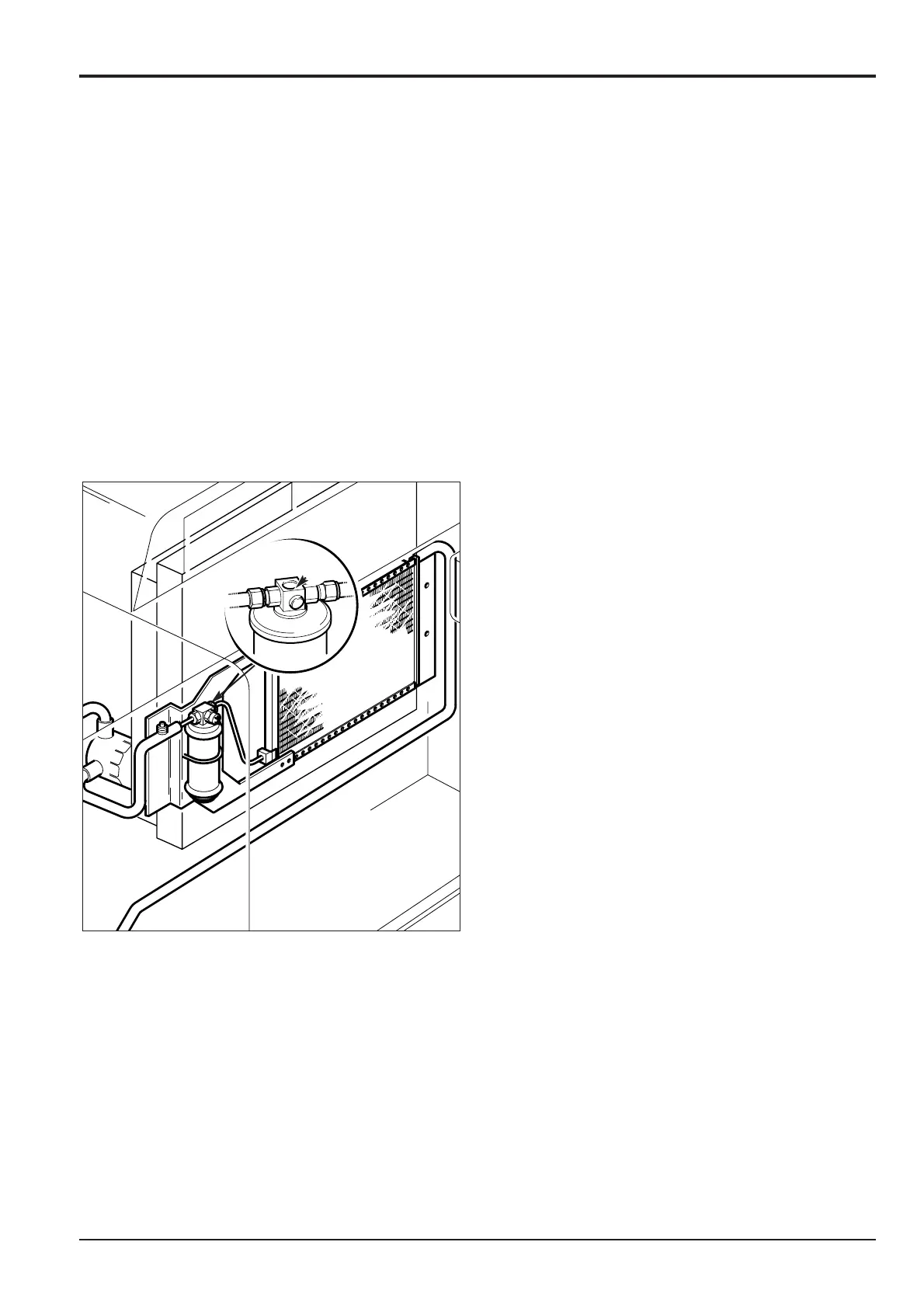12 - 8
Checking Refrigerant Charge Level
The pressure in the system, i.e. the refrigerant charge level
can be determined by checking the state of refrigerant at the
receiver drier sight glass. The receiver drier is mounted on
the radiator on the side of the engine.
If the level of charge is correct the sight glass will be clear. If
the charge is low bubbles will be seen. Bubbles may also be
an indication of inadequate cooling, due to a restriction of air
flow around the condenser coil. Recharging of the system
should be carried out by an air conditioning engineer. Check
refrigerant charge level as follows:
1 Park the machine on firm, level ground. Lower the
excavator arms to the ground. Engage the parking
brake.
2 Open the left hand side, rear door.
3 Start the engine and run at idle. Switch air conditioning
ON to circulate refrigerant.
4 Check refrigerant charge level at sight glass A.
Leak Testing
! WARNING
Leak testing in Air Conditioning systems should be
carried out only in a well ventilated area.
BF 1-2
Note: The refrigerant is heavier than air and will leak
downwards from the defective component. Check in still
conditions but in a well ventilated area.
Hose or pipe connections are likely leakage points of any
refrigerant circuit.
To test for leaks in the high pressure side of the system i.e.
from the compressor output to the expansion valve, run the
air conditioning for a few minutes then switch off the engine
and test for leakage using an electronic leak detector or
soapy water.
To test for leakage in the low pressure side of the system,
switch off the air conditioning and leave for a few minutes
before testing.
Tightening Leaking Hoses
! WARNING
The air conditioning system is a closed loop system and
contains pressurised refrigerant. No part of the system
must be disconnected except by a qualified refrigeration
engineer. You can be severely frostbitten or injured by
escaping refrigerant
4-3-4-1/1
The refrigerant hoses have crimped ferrule end fittings. The
hose connectors have an 'O' ring seal which compresses
when the connection is tight, creating an air tight seal.
Hoses are used to connect the inlets and outlets of the
compressor, condenser, receiver drier and expansion valve
(the evaporator coil is connected to the expansion valve
within the air conditioning unit using rigid pipes).
If leakage is detected from a hose connector, either by
means of an electronic leak detector or soapy water, tighten
the connector up and repeat the leakage test. If leakage is
still evident, it will be necessary to de-gas the system and
renew the connector 'O' ring seal.
Section B
Body & Framework
9803/6400
Section B
12 - 8
Issue 1
Air Conditioning
AA

